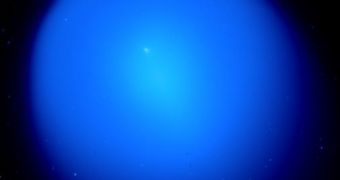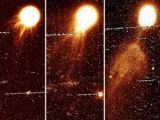You know how they say you'll never find what you're actually looking for? It's true, don't try to prove otherwise because I don't think you can. Last year during late October, comet Holmes suddenly suffered an outburst, thus enhancing its brightness more than one million times in the matter of a few days. In the following weeks, Holmes came to be the biggest object in the solar system, exceeding even the diameter of the Sun.
Meanwhile, three hours before anyone even noticed that comet Holmes experienced an outburst, astronomer Dr Hendry Hsieh, using the SuperWASP-North facility located on the island of La Palma, was searching for planets around other stars. One of the robotic cameras scanning the sky, eventually came to point towards comet 17P Holmes, to capture the first images of the outburst of the comet.
Dr Hsieh related the event that took place on 24 October 2007, at the Royal Astronomical Society's National Astronomical Meeting on 2 April. "By the time SuperWASP spotted the comet, it had already brightened by a factor of 1000. But this was still almost 3 hours before anyone else noticed it," said Hsieh. He says that in the next two hours, the comet had brightened too much, so the cameras of the SuperWASP facility were no longer able to make observations.
Unlike typical comets, which produce characteristic Tails of gas as their solid nucleus is being heated by the Sun, comet Holmes released a great deal of material in a very short time, thus producing an outburst. Only after two days, the material ejected into space expanded so much that it became observable from the northern hemisphere.
"Over the next few weeks, SuperWASP continued to observe comet Holmes as the cloud of dust and gas surrounding the 3-kilometer diameter nucleus of the comet steadily expanded. By 31 October, the cloud was already 900,000 kilometers across or more than twice the distance from the Earth to the Moon. Using our SuperWASP observations, we measured the speed of expansion of the outer edge of this cloud to be over 1500 kilometers per hour and by 17 November measured the size of the cloud to be more than 2 million kilometers across - much larger than the Sun."
As the object faded slowly into darkness, comet Holmes sprung a faint and delicate tail. Detailed investigations were conducted soon after the outburst, however the cause remained undetermined. Comet 17P Holmes was discovered in 1892, when it experienced a similar outburst.

 14 DAY TRIAL //
14 DAY TRIAL // 
